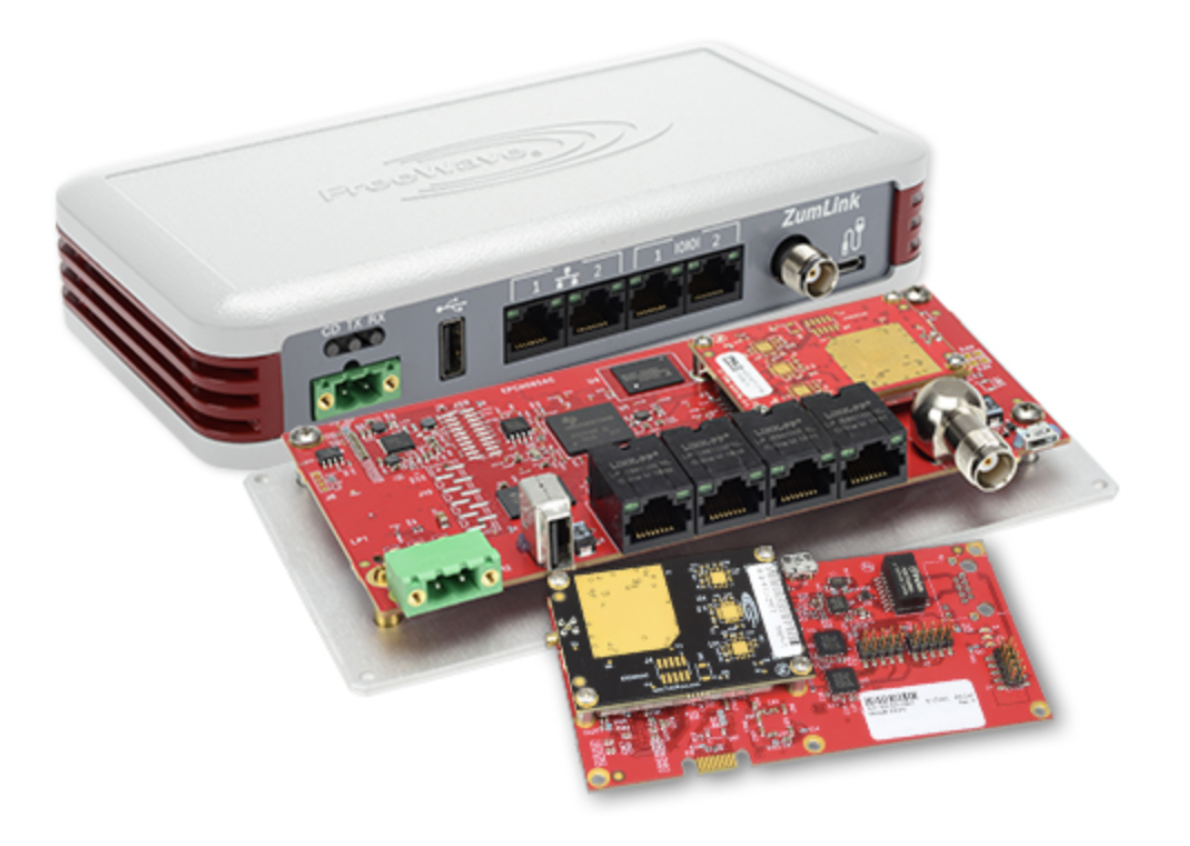Freewave ZumLink Radios

FreeWave ZumLink radios are high-performance industrial wireless communication devices designed for fast, reliable data transmission in demanding environments. RSP Supply offers several ZumLink radio configurations operating in the unlicensed 900 MHz ISM band, available in both board-level and enclosed formats with multiple Ethernet and serial access ports. These radios are well suited for industrial automation, infrastructure, and commercial networking applications requiring high throughput and low latency.
ZumLink radios are engineered for maximum data efficiency, supporting throughput rates of up to 4 Mbps. Advanced technologies such as data compression, packet aggregation, and forward error correction help ensure consistent performance even in challenging RF conditions. ZumLink radios also leverage FreeWave’s ZumBoost Network Acceleration Pack to optimize network efficiency across complex wireless deployments.
Designed for flexible network architectures, FreeWave ZumLink radios support point-to-point, point-to-multipoint, and mesh topologies. Their rugged construction allows reliable operation in harsh industrial and outdoor environments, including exposure to moisture, temperature extremes, and mechanical shock. This combination of speed, durability, and network flexibility makes ZumLink radios a strong choice for scalable industrial wireless systems.
More Information about Freewave ZumLink Radios
The rugged design of the ZumLink radio makes it suitable for deployment in extreme environmental conditions. They are constructed to withstand some really salty conditions and ensure that the radios perform well despite exposure to moisture, heat, cold, and mechanical shock, a must for outdoor industrial locations. These durability factors make the ZumLink radio suitable for use in demanding industrial settings as well.
FAQs
Q: What frequency bands do FreeWave ZumLink radios operate in?
FreeWave ZumLink radios are available in the unlicensed 900 MHz ISM band and select licensed bands, depending on the model and application requirements.
Q: What data rates do ZumLink radios support?
ZumLink radios support data throughput of up to 4 megabits per second using advanced transmission and error-correction technologies.
Q: What network topologies are supported by ZumLink radios?
ZumLink radios support point-to-point, point-to-multipoint, and mesh network configurations.
Q: What is FreeWave’s IQ application environment?
FreeWave’s IQ application environment is a Linux-based platform used for developing and deploying industrial applications directly on compatible FreeWave radios.
Q: What are common causes of radio communication failure?
Common causes include incorrect radio configuration, electromagnetic interference (EMI), improper cable selection, damaged cables, poor antenna placement, and lack of clear line of sight.
Why Buy FreeWave ZumLink Radios from RSP Supply
RSP Supply offers a wide selection of FreeWave ZumLink radios in both board-level and enclosed configurations to support high-speed industrial wireless networks. Our product offerings provide reliable performance, flexible deployment options, and rugged durability for demanding applications. Customers rely on RSP Supply for technical expertise, dependable sourcing, and proven FreeWave wireless communication solutions.

